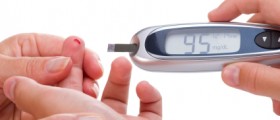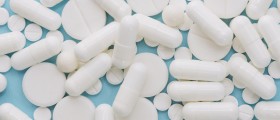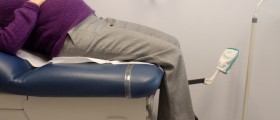Introduction to Excessive Thirst in Children
When a child is constantly thirsty it might be a symptom of a serious disease, which is why it is best not to take such a thing lightly.
Parents often ignore this, because they believe that since the child is very active, it is constantly dehydrated and needs to drink a lot.
However, excessive thirst can be the indication of a more serious problem.

Causes
Diabetes mellitus is one of the most common causes of excessive thirst in children.
This occurs because of an excess of glucose in the blood stream. Type 1 diabetes occurs in children because the insulin producing beta cells in the pancreas are destroyed, which does not allow the child to get enough insulin.
It is commonly referred to as juvenile diabetes.
Diabetes insipidus is another type of diabetes that could cause excessive thirst and it result from a lack of anti-diuretic hormone or the kidney not being able to handle the hormone.
This hormone is responsible for giving signals to the kidney that it must reabsorb as much water as possible.
When a child has this form of diabetes, it urinates very frequently, which leads to a loss of fluid in the body, which in turn causes the child to be thirsty.
- If pituitary stalk thickening of
- In NDI besides treatment of the underlying cause, use of high calorie low solute diet and drugs to ameliorate water excretion (thiazide, amelioride, indomethacin) are useful. Children with NDI however well treated, remain short and have mental retardation on follow up.
- In children acute onset of CDI either during or soon after neurosurgery is managed with care to avoid hyponatremia. As fluid intake more than 1 L/m2/d periopertatively results in dilutional hyponatremia; and, restriction of fluids to 2/3 normal maintenance is recommended.
- If a known case of DI requires surgery and needs prolonged oral fluid restriction, the usual dose of desmopressin is withheld prior to surgery. The child is kept on 1 L/m2/d of restricted intravenous fluids. When the effect of the previous desmopressin dose wanes off and CDI sets in, intravenous aqueous vasopressin is started as per the perioperative CDI protocol described above.
- If a child with CDI is to receive high volume of fluid as part of hydration accompanying chemotherapy or forced dieresis, management of DI is difficult. The antidiuretic therapy needs to be discontinued and fluid intake should be increased to 3-5 L/m2/d which will help maintain the tonicity.
- As glucocorticoids are essential for insertion of water channels independent of vasopressin, cortisol deficiency inhibits free water clearance and adequate replacement if required helps achieve better control of DI.
Other Known Causes of Excessive Thirst in Children
Dehydration is another common cause of a child constantly being thirsty.
This results when the body experiences an excessive loss of fluids. One of the most common causes of dehydration in children is a viral infection which can cause a high fever, which makes a child sweat, and also causes the child to vomit and have diarrhea, which also results in a loss of fluids.
Bacterial and parasitic infections can also cause dehydration, specifically from all of the fluid being lost because of constant cases of diarrhea.
Constant thirst in a child can also be a sign of congestive heart failure. This occurs when the heart is too weak and it cannot pump blood and oxygen to the body.
Any type of physical exertion by the child in such a case will result in the heart not being able to pump blood and oxygen to other organs.
Another possible cause is when there is a lesser volume of blood in the body, which is known as hypovolemia.
If the child child’s drinking is not a proportion with the amount of times he or she is urinating, then it might be a kidney problem in question as well.

















Your thoughts on this
Loading...